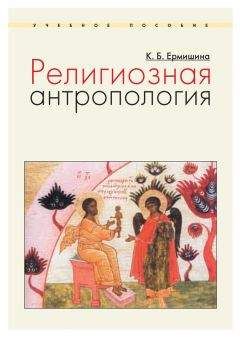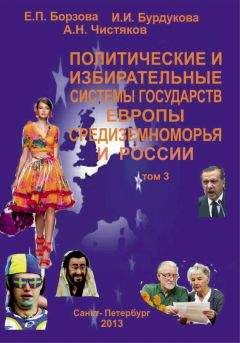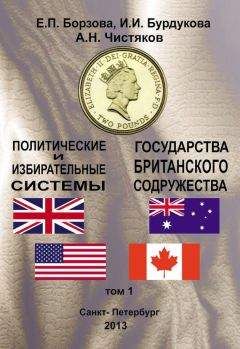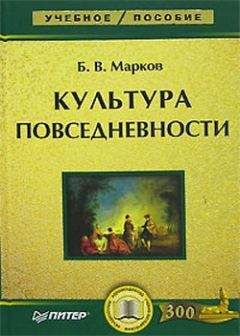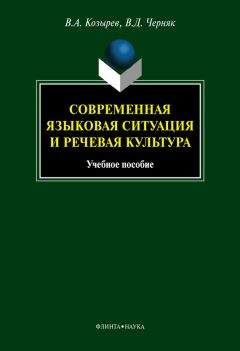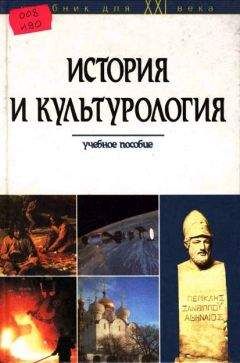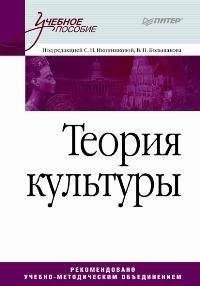Алексей Минченков - Glimpses of Britain. Учебное пособие
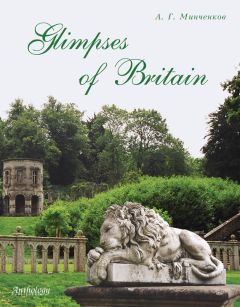
Все авторские права соблюдены. Напишите нам, если Вы не согласны.
Описание книги "Glimpses of Britain. Учебное пособие"
Описание и краткое содержание "Glimpses of Britain. Учебное пособие" читать бесплатно онлайн.
Учебное пособие посвящено истории и современной жизни Великобритании. В хронологическом порядке описаны основные исторические события и личности, оказавшие влияние на формирование британского самосознания и культуры. Отдельное внимание уделено истории архитектурных стилей. Подробно рассматривается современное состояние монархии, системы государственного и местного управления, парламентская и судебная системы, а также вопросы, связанные с национальным наследием и государственной символикой. Пособие включает в себя переводческий глоссарий с фонетической транскрипцией и хрестоматию, содержащую газетно-журнальные тексты страноведческого характера и выходящую отдельной книгой. Издание богато иллюстрировано авторскими фотографиями.
Пособие предназначено для студентов и школьников, занимающихся страноведением Великобритании, преподавателей, переводчиков и всех, кто интересуется историей, культурой и современной жизнью этой страны.
The Gothic style began in the Ile de France, the small domain of the French kings round Paris, and first appeared in England during the last few years of the 12th century, quickly spreading across the country. Structurally, Gothic architecture is characterized by three main features: the pointed arch, the rib vault and the flying buttress. English Gothic, however, has its own peculiarities. Most of the English Gothic cathedrals, especially early ones, retained the thick Anglo-Norman walls and tended to hide flying buttresses. Gothic architecture in England is usually divided into three periods: Early English (late 12th – mid-13th century), Decorated style (1250–1375) and Perpendicular (1375-early 16th century). To the Early English style belong Canterbury Cathedral (rebuilt after a fire in 1174) [21] and the cathedrals of Wells, Lincoln and Salisbury. Salisbury Cathedral (begun in 1220) with its massive walls and constrictions of space in the nave and choir is typically English. The tower and spire were added in the 14th century. [18]
The Decorated Style is more ornate, with ever-larger windows, stained glass and window tracery. Examples of this style are the cathedrals of Lichfield [29], Hereford and Exeter.
In the Perpendicular style the walls, windows and roof were unified in an uninterrupted pattern of vertical lines. The most remarkable features of this style are the magnificent hammer beam roof (roof of complex open-timber construction), and the fan vaulting that appeared in the late 15th century. The finest examples of the Perpendicular style are Gloucester Cathedral, the nave of York Minster and the interior of King’s College Chapel, Cambridge.
Castles continued to become more elegant and less martial. At Kenilworth Castle, for example, one can see both a strong earlier keep [16] and the Great Hall of the 14th century with its oriel window, tall windows and the remains of a hammer beam roof. The Great Hall was for meetings, meals and sometimes sleeping, with the service rooms at one end and the private apartments at the other. Peaceable conditions in the late Middle Ages often led to the abandonment of strongholds, and the gentry used their increased wealth to build fine manor houses with only a hint of martial purpose. These were Gothic houses built mainly in the Perpendicular style. A great hall remained the centre of the house. A typical medieval manor house is Penshurst Place, built in the middle of the 14th century. [22] It has two wings joined by a great central hall, now known as the Baron’s Hall. Haddon Hall in Derbyshire is another example of late 14th century architecture. [23–25] At that time it had the central banqueting hall, kitchens, a parlour and a chapel. Originally the banqueting hall was the main dwelling space in the house, and housed between forty and fifty people both day and night.
Surprisingly, in 1272 the realm of England didn’t embrace the natural boundaries of the island. No attempt had been made either by William the Conqueror or his successors to subjugate the Celtic lands of Wales, Scotland and Cumberland. Had it been done the history of Britain would probably have been very different. As it was, the people living on these lands had had two centuries in which to develop and strengthen their sense of individual identity and political as well as cultural independence, so that when Edward I set out to bring them under his rule there was resistance, and his attack only increased the sense of regional loyalty.
Edward I (1272–1307), named after his father’s favourite saint Edward the Confessor, was a popular king and a brave soldier, who, though sharing his father’s strong belief in the sanctity of kings, cooperated actively with Parliament. He liked to discuss taxes with the knights and borough representatives and depended on them to explain his royal policies to the people. His consultations with parliamentary representatives were embodied in what were called statutes, which became a new means of making law, eventually leading to modern statute law. By means of these statutes the king was able to settle grievances over land ownership and preserve law and order in the land. Yet his major policies aimed at uniting the island under one sovereign by conquering first Wales and then Scotland.
Unlike England, Wales was a very poor, backward country divided into several princedoms which only occasionally came together under one single ruler. The Welsh proved no match for the English. As a result, by 1295, the principality of Wales had ceased to exist. New counties were created on the Welsh territory and English administration was introduced. English people were encouraged to settle in Wales. Edward also built a series of castles in Wales, ten in all, most of which still stand. These castles were unrivalled in their time as marvels of military engineering, and the grandest of them all was Caernarfon.
Scotland was to be a very different story. By the close of the 13th century it had already developed a kingdom of its own, directly modelled on the Anglo-Norman one. Consequently, Edward’s plan to make Scotland part of his kingdom, to build castles and introduce English officials, administration and law met with resistance. At first the Scots were defeated (1296), but they didn’t give up and a major campaign was fought every summer, so that eventually Edward I died still fighting for control. The task of subjugating the Scots wasn’t fulfilled.
Edward II (1307–1327) was a weak and lazy king who left the work of government to incompetent favourites. Soon a party of lords was formed against him. Parliament approved of their plans, which demanded the public appointment of all the king’s household as well as of the state officials. The king was soon in trouble in other ways too. His father-in-law, the French king, attacked the lands around Bordeaux. When Edward led a campaign against the Scots, his army was routed at Bannockburn. Finally even his queen, Isabella, turned against him. She and her lover, Roger Mortimer, seized Edward with the help of foreign soldiers, and Parliament forced him to hand over the crown to his son. A few months later he was murdered in Berkeley Castle.
Legend has it that the founding of the Order of the Garter is a direct result of the king’s passion for chivalrous behaviour. Edward is said to have picked up a garter dropped by a court lady at a ball and tied it round his leg saying ‘Honi soi qui mal y pense.’ However, the most plausible theory of why the garter was chosen as the emblem of the new Order is that it was a badge which the English knights adopted during the French campaign. The colours of the new Knights, deep blue and gold, were the colours of the French royal arms. From the start the Order included 26 Knights Companion, including the king. Many of them took part in the king’s French campaigns. Their patron saint, as of England itself, was St. George, a supposed officer of the Roman army. The original Knights were all young warriors, the military companions of the king and his son. Over subsequent centuries, however, the character of the knights changed, and they came to be drawn from the ranks of the leading nobles and statesmen, as well as foreign monarchs. The ceremonies of the Order increased in splendour, with glorious music, procession of heralds and a great feast taking place every year on St. George’s Day in April, when the whole court moved to Windsor. The court still is ‘in residence’ at Windsor in April each year, but the annual Garter celebration now takes place in June.
Edward III (1327–1377) was only fifteen when he succeeded his father, and for three years his mother and Mortimer ruled in his name. Then Edward had them arrested. Mortimer was hanged in London and Isabella eventually became a Franciscan nun. Edward III is generally believed to have been an ideal medieval king. He was a brave general in battle, a born leader, had charm and good humour. Edward realized the importance of the correct use of patronage in keeping the nobles loyal and contented with his rule. He created new earls, granting them lands, and even married some of his daughters into the nobility. He also proved to be a mighty patron of architects, painters and musicians. Keen on chivalry, chivalrous pursuits and virtues, Edward rebuilt Windsor Castle as a setting for great festivals of chivalry, indeed transforming it into his Camelot, to which knights flocked from all over Europe in tribute to his fame. In 1348 he founded the Order of the Garter, whose motto Honi soi qui mal y pense (Shame to him who thinks this evil) challenged anyone who dared oppose the English claim to the French throne.
The Order of the Garter is thus closely connected with the major event in the reign of Edward III, the start of the Hundred Years’ War, which, in fact, lasted one hundred and fifteen years in all. The causes of the war were complex. Edward claimed the French crown through his mother, a French princess. Indeed, he would have had a greater claim to be king of France than Philip VI, the first Valois king, if France hadn’t had the Salic Law, according to which the right to succeed could only pass through men and never through a woman. Edward had good reasons to want control of France. The French were doing their best to spoil England’s wool trade, especially in the Netherlands; the French ships threatened the Channel; France was allied with Scotland and stirred up trouble there; finally, the French held the pope prisoner in Avignon and misused his influence on the English church.
The war that started in 1337 was to be different from all its predecessors, for it quickly assumed the character of a crusade fought by a true king against a usurper. In 1340 Edward III publicly proclaimed himself king of France and the lilies of France were added to his coat of arms, which remain there to this day. Edward played his role to the full, riding at the head of his troops into battle and addressing them with a speech. His son, Edward of Woodstock, called the Black Prince probably on account of his black armour, was even more famous than his father, being hailed as ‘the flower of chivalry of all the world’. At the age of sixteen he was already leading part of the English forces into battle. For over two decades the English won victory after victory. In the Battle of Crecy (1346) the king and his son defeated an enemy force more than twice their number. The victory was due to the use of the longbow and the king’s skill as a general. The battle was followed by the siege and surrender of the port of Calais which was to remain in English hands for two centuries. Ten years later came another legendary battle, Poitiers, in which the young Black Prince was the hero. He defeated the French and took their king prisoner.
That glorious phase of the war came to an end in 1360 when peace was made and the enormous ransom of three million pounds was paid for the French king. The English lands in France were enlarged as they now included Calais. Although the war was renewed in the 1370s it was never as successful. By then Edward was old and the Black Prince ill. The Valois kings shrewdly avoided battle. There was little active warfare during the next two reigns. Richard II (1377–1399), the grandson of Edward III and the last Plantagenet king, realized that the long war with France which he inherited was ruining the country. Henry IV (1399–1413), of the House of Lancaster, was a weak ailing monarch whose whole reign was marked by rebellions both in the north and in Wales. Yet the war was popular with the great lords, for through it they profited by plunder and ransoms. They had actually been permitted by Edward III to raise private armies for the French war. The lords were given what they wanted by the next king Henry V (1413–1422), a natural soldier and a born leader of men, immortalized by Shakespeare. Henry voiced his territorial claims to France from the moment of his accession. In 1415 he won the Battle of Agincourt, defeating a French army five times greater than his own and destroying the flower of the French nobility. During the next year the English were again victorious, this time over the French fleet. By 1418 the whole of Normandy had fallen into Henry’s hands. The French king agreed to disinherit his son and recognize Henry, married to his daughter, as ‘heir of France’. The child of this marriage would be destined to rule over the dual monarchy of France and England. However, this was not to happen. In 1422 Henry V died and Parliament began to complain about the cost of the war. The conquest of Normandy was not working, and it was proving impossible to administer. Besides, the war had united the French behind their Dauphin. Within a few years Joan of Arc appeared to inspire a new loyalty to the French crown and, with Henry V dead and his son Henry VI (1422–1471) a mere child (he was born in 1421), the English had lost their commander. Before long, the dual monarchy had vanished, and within thirty years England was reduced to its old foothold of Calais.
During the Hundred Years’ War some important changes and events were taking place in England. While the king was busy with his wars, Parliament quickly developed towards its present form. The common people’s representatives got into the habit of meeting privately to discuss their business before they joined the lords. By 1350 they also had a Speaker, whose duty was to speak for them all and to express their agreed opinion to the lords. Within the next ten years the old Parliament divided into three parts: a House of Commons, a House of Lords and a small permanent council. The third body was composed of the king’s official advisers who met regularly, the others only met when Parliament was called. As the War was going on, Parliament was being constantly pressed for funds, so it met more often and gradually secured greater and greater control of the purse strings. As long as parliament supported his wars, Edward III was quite happy to increase its powers and give it complete control of the taxes.
Edward III also began to appoint Justices of the Peace. They were unpaid servants of the Crown given the local powers of the king’s sheriffs and judges.
A major event that took place soon after the accession of Richard II is known as the Wat Tyler rebellion, the Great Revolt (1381). This was a rising of the English underclass, the poor villains and wage-earners, who, unlike the other classes of society (lords, knights, squires, townspeople, freemen), weren’t represented in Parliament and whose voice couldn’t be heard in the government. The villains (or serfs) were tied to their lord’s manor and had to do feudal service on the lord’s land for three days of the week, receiving in return strips of land often scattered over several large fields. Most of them, however, weren’t satisfied with their position, willing to pay rent for their farms and objecting to feudal service. Besides, owing to the devastating effects of the Black Death, the plague that scourged the country around the middle of the 14th century, the population fell dramatically, labour became expensive, and villains, growing prosperous, could sometimes buy their freedom. Yet most were refused it and the result was bitter resentment. To make matters worse, in 1380 Parliament, to meet the cost of the French war, imposed what was called a poll-tax on the whole adult population. The amount was one shilling, to be paid by every man no matter how much he earned. This was unfair on the poor labourers, whose average monthly wage was just about a shilling. When it came to collecting the tax, there was widespread evasion. When government officials were sent into the shires to force the collection, the result was open revolt, for the tax proved to be the final straw in the list of grievances. The rebellion quickly spread throughout the country, the discontented massed in thousands, and soon their leaders emerged, Jack Straw in Essex and Wat Tyler in Kent. Everywhere the rebels went they released prisoners but above all burnt documents, anything that recorded serfdom. Landlords were seized and forced to give their villains charters of freedom. The rebellion was eventually crushed, but the ruling class had a narrow escape (several of the king’s ministers including the Archbishop of Canterbury and the Treasurer were killed) and learnt a bitter lesson. Gradually the lords gave up their claims to feudal service and accepted rent instead, which resulted in the emergence and rapid development of a class of yeoman farmers. The process accelerated with the arrival of sheep farming, for now the squire needed fewer hands and more money. Serfdom died a slow death through the following century. These changes signaled the beginning of the end of medieval England.
Подписывайтесь на наши страницы в социальных сетях.
Будьте в курсе последних книжных новинок, комментируйте, обсуждайте. Мы ждём Вас!
Похожие книги на "Glimpses of Britain. Учебное пособие"
Книги похожие на "Glimpses of Britain. Учебное пособие" читать онлайн или скачать бесплатно полные версии.
Мы рекомендуем Вам зарегистрироваться либо войти на сайт под своим именем.
Отзывы о "Алексей Минченков - Glimpses of Britain. Учебное пособие"
Отзывы читателей о книге "Glimpses of Britain. Учебное пособие", комментарии и мнения людей о произведении.














